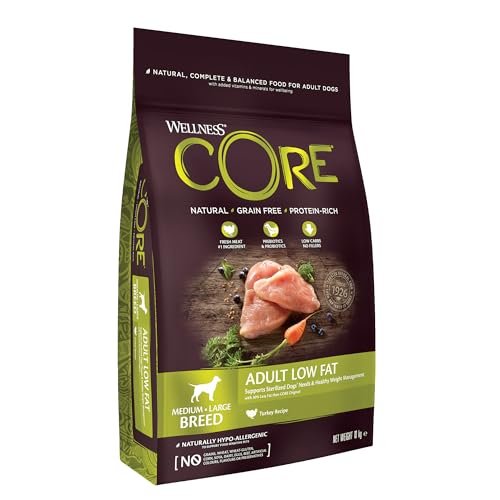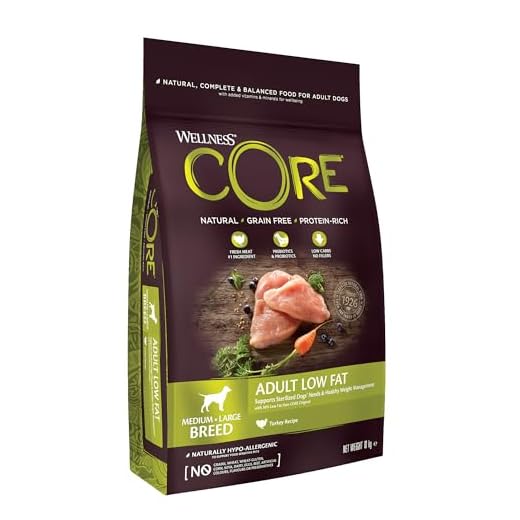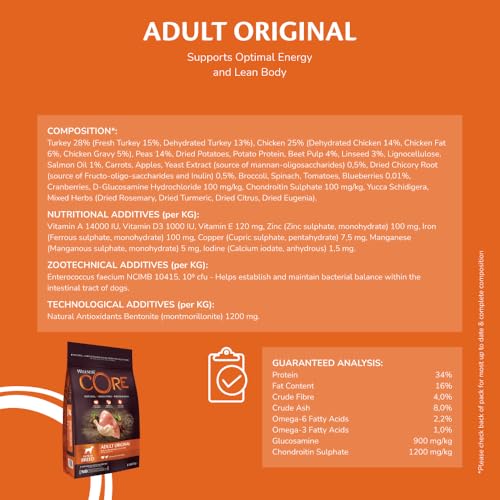




As a dog owner, I understand the challenges of dealing with a pup who has pica. This condition, characterized by the consumption of non-food items, can be frustrating and concerning. One crucial aspect of managing pica in dogs is ensuring they receive a balanced and appropriate diet. Choosing the right dog food for a pet with pica requires careful consideration of nutritional needs and ingredient quality.
In my quest to find the best dog food for my pica-affected canine companion, I delved deep into research and consulted with veterinarians. I learned that a tailored diet can play a significant role in managing pica symptoms and promoting overall health and well-being in dogs. With the plethora of options available in the market, navigating through various dog food brands and formulations can be overwhelming. However, armed with knowledge and understanding, pet owners can make informed choices to support their furry friends.
In this comprehensive guide, I will share insights into identifying the best dog food for dogs with pica. From understanding the nutritional requirements of pica-afflicted dogs to evaluating ingredients and selecting appropriate formulations, I aim to empower fellow pet owners with the knowledge needed to make the best dietary decisions for their beloved companions.
Understanding Pica in Dogs
Pica in dogs, a condition where they compulsively consume non-food items, can be concerning for pet owners. As someone passionate about canine health, delving into the roots of this behavior is crucial to provide effective solutions.
Exploring Causes: One key aspect of understanding pica is recognizing its potential triggers. It may stem from nutritional deficiencies, anxiety, boredom, or even learned behavior. As a responsible pet caregiver, identifying these underlying factors is essential for devising a tailored approach to address the issue.
- Evaluating Nutritional Needs: Adequate nutrition plays a pivotal role in canine well-being. Nutrient deficiencies, such as iron or fibre, could drive a dog to seek unconventional sources for fulfilling its dietary requirements.
- Managing Anxiety and Boredom: Dogs, like humans, can experience stress and boredom. In such cases, they may resort to pica as a coping mechanism. Implementing strategies to alleviate anxiety and providing mental stimulation can mitigate this behaviour.
- Breaking Learned Patterns: Sometimes, dogs learn to consume non-food items through observation or past experiences. By reshaping their environment and reinforcing positive behaviours, we can gradually eliminate these ingrained habits.
The Significance of Selecting the Appropriate Dog Nutrition
Ensuring the right diet for your dog is paramount for their overall well-being. As a responsible pet owner, I understand the pivotal role nutrition plays in my dog’s health and happiness. Opting for the best-suited dog food not only addresses their dietary needs but also safeguards against potential health issues.
Choosing the optimal dog food involves a meticulous assessment of their specific requirements and any existing health concerns. By scrutinizing the ingredients list, I prioritize quality over quantity, steering clear of fillers and additives that may compromise my dog’s digestive system or trigger allergies. My commitment to sourcing wholesome nutrition underscores my dedication to providing my canine companion with the best possible care.
Key Considerations in Selecting Dog Food:
- Nutritional Balance: Prioritizing a balanced blend of proteins, carbohydrates, fats, vitamins, and minerals ensures my dog receives comprehensive nutrition, supporting their growth and vitality.
- Ingredient Quality: Opting for dog food crafted from high-quality, natural ingredients minimizes the risk of adverse reactions and maximizes the nutritional value, promoting optimal health and longevity.
- Special Dietary Needs: Tailoring my dog’s diet to address specific dietary requirements, such as allergies or sensitivities, guarantees their dietary satisfaction and fosters a healthy digestive system.
- Consultation with Veterinarian: Seeking guidance from a veterinary professional enables me to make informed decisions regarding my dog’s nutritional needs, ensuring their diet aligns with their individual health status and lifestyle.
Factors to Consider When Choosing Dog Food for Pica
When selecting dog food for a pet prone to Pica, several crucial factors demand attention. As someone who understands the importance of tailored nutrition for dogs with unique dietary needs, I’ve learned to prioritize specific elements to ensure my canine companion’s well-being.
First and foremost, I scrutinize the ingredients list with meticulous care. Opting for dog food containing high-quality, easily digestible proteins is paramount. These proteins, sourced from reputable animal proteins like chicken, turkey, or fish, provide essential amino acids necessary for muscle maintenance and overall health.
- Nutrient Content: Ensuring the dog food provides balanced nutrition is essential. Look for formulas enriched with vitamins, minerals, and antioxidants to support your dog’s immune system and overall health.
- Texture: Consider the texture of the dog food, especially for dogs with Pica. Some dogs may prefer softer textures, while others may require larger kibbles to encourage chewing and discourage swallowing inappropriate items.
- Palatability: Palatability plays a significant role in encouraging dogs to eat their food consistently. Opt for dog food with flavors your pet enjoys, but ensure these flavors come from natural sources to minimize the risk of triggering Pica-related behaviors.
- Special Formulas: Some dog food brands offer special formulas designed explicitly for dogs with Pica or sensitive stomachs. These formulas may contain specific ingredients to help reduce the urge to consume non-food items and support digestive health.
Key Ingredients for Addressing Pica in Dog Food
Pica can be a challenging condition for dogs, requiring careful consideration of their dietary needs. When selecting a dog food to manage pica, it’s crucial to prioritize ingredients that promote digestive health and meet nutritional requirements.
Here are some essential components to seek out:
- High-Quality Proteins: Opt for dog foods with easily digestible proteins like chicken, turkey, or fish. These proteins are essential for muscle development and overall health.
- Fiber-Rich Sources: Look for ingredients such as brown rice, sweet potatoes, or peas, which provide essential fiber to aid digestion and regulate bowel movements.
- Omega-3 Fatty Acids: Incorporating sources like salmon oil or flaxseed into your dog’s diet can help reduce inflammation and support brain function, potentially alleviating pica-related behaviours.
- Antioxidant-Rich Fruits and Vegetables: Ingredients like blueberries, spinach, and carrots are rich in antioxidants, which can boost your dog’s immune system and promote overall well-being.
- Probiotics: Dog foods containing probiotics can help maintain a healthy balance of gut bacteria, aiding digestion and potentially reducing the urge to consume non-food items.
Reviews of High-Quality Dog Foods for Pica
When it comes to addressing Pica in dogs, choosing the right food is paramount. After extensive research and consulting with veterinarians, I’ve compiled a list of top-notch dog foods tailored to mitigate this condition. Here are some noteworthy options:
1. Royal Canin Gastrointestinal High Energy Dry Dog Food
One standout choice is the Royal Canin Gastrointestinal High Energy Dry Dog Food. Crafted specifically to support gastrointestinal health, this formula is enriched with essential nutrients and easily digestible ingredients. It’s a solid pick for dogs prone to Pica, as it helps maintain optimal digestive function while providing the necessary energy levels.
- Pros: Tailored for digestive health, high energy content, easily digestible ingredients.
- Cons: Slightly higher price point compared to other options.
2. Purina Pro Plan Veterinary Diets EN Gastroenteric Formula Dry Dog Food
Another commendable option is the Purina Pro Plan Veterinary Diets EN Gastroenteric Formula Dry Dog Food. Engineered by experts to promote gastrointestinal health, this formula boasts a balanced blend of nutrients, including prebiotics and omega fatty acids. It’s designed to support digestive function and alleviate symptoms associated with Pica, making it a reliable choice for concerned pet owners.
- Pros: Formulated by experts, contains prebiotics and omega fatty acids, supports digestive function.
- Cons: May not be suitable for dogs with specific dietary restrictions.
Each of these dog foods has been carefully selected based on its ability to address Pica while prioritizing overall health and well-being. Remember to consult with your veterinarian to determine the best option for your furry friend’s unique needs.
Transitioning Your Dog to a New Diet
Before making any changes to your dog’s diet, it’s crucial to consult with your veterinarian. They can provide tailored advice based on your dog’s specific needs and health condition.
When transitioning to a new diet for your dog, it’s essential to do so gradually. Abrupt changes can upset your dog’s stomach and lead to digestive issues. I recommend slowly introducing the new food over the course of about a week.
Step 1: Begin by mixing a small amount of the new food with your dog’s current food. Start with around 25% new food and 75% old food.
Step 2: Monitor your dog’s response to the new diet. Look for any signs of digestive upset such as vomiting, diarrhea, or decreased appetite. If you notice any adverse reactions, slow down the transition process or consult with your vet.
Step 3: Gradually increase the proportion of the new food while decreasing the old food over the next several days. Aim to reach a 50/50 ratio of old food to new food by the end of the first week.
Step 4: Continue monitoring your dog’s health and appetite throughout the transition period. Once your dog is comfortably eating the new diet without any issues, you can fully transition to the new food.
Step 5: Remember to provide plenty of fresh water for your dog during the transition process. Proper hydration is essential for maintaining your dog’s overall health and well-being.
Tips for Managing Pica Through Nutrition
As someone who has dealt with the challenges of managing pica in dogs, I’ve learned that nutrition plays a crucial role in addressing this condition. Here are some effective strategies I’ve found:
- High-Quality Protein: Incorporating a diet rich in high-quality protein sources can help satisfy your dog’s nutritional needs, potentially reducing the likelihood of them seeking out non-food items. Look for protein sources like lean meats, poultry, and fish.
- Fiber-Rich Foods: Including fiber-rich foods in your dog’s diet can promote better digestion and help prevent them from consuming non-food items out of dietary deficiency or boredom. Consider adding vegetables like carrots, green beans, and broccoli to their meals.
- Regular Feeding Schedule: Establishing a consistent feeding schedule can help regulate your dog’s appetite and reduce their urge to engage in pica behaviour. Aim to feed them at the same times each day, providing balanced meals that meet their nutritional requirements.
Furthermore, it’s essential to consult with your veterinarian to develop a tailored nutrition plan that addresses your dog’s specific needs and considers any underlying health conditions they may have. By prioritizing their nutritional well-being, you can effectively manage pica and promote a healthier lifestyle for your canine companion.
Consulting with a Veterinarian: What You Need to Know
When dealing with Pica in dogs, consulting with a veterinarian is crucial. Here’s what you need to know before your appointment:
Pica can have various underlying causes, including nutritional deficiencies, behavioural issues, or medical conditions. A veterinarian will conduct a thorough examination to determine the root cause.
Key Points to Discuss with Your Veterinarian:
- Symptoms Observation: Describe your dog’s symptoms in detail. Note any changes in behaviour, appetite, and any unusual items your dog has ingested.
- Dietary History: Provide information about your dog’s current diet, including the type and brand of food, treats, and any supplements.
- Environmental Factors: Discuss your dog’s living environment and any recent changes that might be relevant.
- Previous Medical History: Inform your veterinarian about any past medical issues or treatments your dog has undergone.
- Diagnostic Tests: Be prepared for your veterinarian to recommend diagnostic tests such as bloodwork, urinalysis, or imaging studies to help identify the underlying cause of Pica.
Remember, your veterinarian is your best ally in ensuring your dog’s health and well-being. By providing detailed information and following their recommendations, you can work together to address Pica and improve your dog’s quality of life.
Best Dog Food For Pica
Features
| Part Number | 2035 |
| Model | 2035 |
| Color | Clear |
| Size | 12 kg (Pack of 1) |
Features
| Part Number | 0000 |
| Model | 0000 |
| Warranty | 45 Day Money Back |
| Size | Single Pack |
| Price history for NutriPaw Digestive Treats for Dogs | |
|---|---|
|
Latest updates:
|
|
Features
| Part Number | 12231701 |
| Model | 12231701 |
| Color | transparent |
| Release Date | 2014-05-23T00:00:01Z |
| Size | 1 count (Pack of 1) |
| Price history for Beta Adult Chicken Dry Dog Food | |
|---|---|
|
Latest updates:
|
|
Features
| Part Number | 02FFHEGF12 |
| Model | 02FFHEGF12 |
| Size | 12 kg (Pack of 1) |
| Language | English |
Features
| Part Number | 10754 |
| Model | 10754 |
| Size | 10kg |
| Language | French |
Features
| Part Number | 10753 |
| Model | 10753 |
| Size | 10 kg (Pack of 1) |
| Language | French |
Q&A:
What is pica in dogs?
Pica in dogs refers to a condition where they eat non-food items, such as rocks, dirt, or even their own feces.
Why is it important to choose the best dog food for pica?
Choosing the right dog food for pica is crucial because it can help address nutritional deficiencies that may be contributing to the behavior, as well as provide proper nutrients to support overall health and well-being.
What should I look for in dog food for a dog with pica?
Look for dog foods that are highly digestible, free from artificial additives, and formulated to meet your dog’s specific nutritional needs. Opt for varieties with high-quality proteins, essential vitamins, and minerals.
Are there any specific ingredients to avoid in dog food for pica?
Avoid dog foods containing fillers, artificial colors, flavors, and preservatives. Additionally, be cautious with foods that contain high levels of certain minerals, such as calcium, as excessive intake may exacerbate pica behaviors.







































